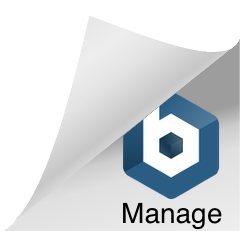Content
This means that business owners have to know their income or expenditure, loss and product, and production capacity. Considering adjustments of opening and closing stock of raw materials. The Cost of Goods Manufactured is an important KPI and an effective tool to gauge the production costs of a manufacturing business and use the results to identify problem areas and make improvements. The company employs eight shop floor workers that are directly responsible for the execution of production processes. Four of them have seniority or special skills and make $2,600 a month, the other four make $2,200 a month. The sum of their three-month salaries (as we decided that the accounting period for the calculations is a quarter, i.e. three months) is the Direct Labor Costs. Calculating the Cost of Goods Manufactured is a good way to get an overview of production costs and how they relate to the bottom line of your business.
Because cost of goods sold is a cost of doing business, it is a business expense. Multiply (1 – expected gross profit %) by sales during the period to arrive at the estimated cost of goods sold. By improving the efficiency of the production process, you can significantly reduce the cost of goods manufactured. You can also recycle materials you use in the production process to save costs. With this method, you will have to spend more on materials in the now, but over time you save money per unit of raw materials purchased. You can reduce the cost of raw materials by buying them at a lower price.
Cost of Goods Sold is the cost of a product to a distributor, manufacturer or retailer. Cost of goods sold is considered an expense in accounting and it can be found on a financial report called an income statement. COGM accounting is different from the calculation of the cost of goods sold because manufactured products may not be actually purchased for some time.
Manufacturing costs involved in the COGM include direct labor, direct materials, factory overhead, and other manufacturing-related costs. The cost of goods manufactured is an integral component for calculating the cost of goods sold. Businesses or companies track it to determine what price to sell their products for a profit. Again, the total manufacturing cost is the aggregate of direct labor cost, direct material cost and factory overhead. The XYZ Factory begins its year with an inventory cost of $4,000 which is considered the beginning work in process inventory.
Cost Of Goods Manufactured Vs Cost Of Goods Sold
Costs for each group Factory Overhead Costs are tracked to various types of products. Factory Overhead Costs are determined from each cost group to each product. If using the accrual method, a business needs to simultaneously record the cost of goods and the sale of said goods. Then the expense is said to be “matched,” according to Accounting Coach. Finally, the value of the business’s inventory is subtracted from beginning value and costs. This will provide the e-commerce site the exact cost of goods sold for its business, according to The Balance. This formula shows the cost of products produced and sold over the year, according to The Balance.
The accurate calculation of both cost of goods manufactured and cost of goods sold however is dependent on the valuation of inventory. It is thus essential to ensure that inventory valuations are neither overinflated nor underinflated to ensure accurate determination of these costs. Product Cost refers to the costs incurred in manufacturing a product intended to be sold to customers. These costs include the costs of direct labor, direct materials, and manufacturing overhead costs. Manufacturing overhead is all costs tied to your organization’s manufacturing operations. These are the ancillary costs in addition to direct materials and labor, and they all must be listed under the cost of goods sold on a financial statement. Accountants within your company have to note the overhead cost for each unit created by your production team.
The distortion also results in under cost / over cost of the product (Hansen & Mowen, 2004). The existence of various weaknesses can be overcome by the use of Activity-Based Costing method. Overhead costs consist of costs for supporting materials, indirect labor wages, and other indirect production costs. Direct labor costs include salaries and wages for workers involved in the production process. In calculating profit, management requires not only revenue data but also production costs. Assuming revenue does not change, the firm can increase profit by streamlining production, resulting in lower costs. The Periodic/Purchases method calculates your cost of sales by simply taking the total of all your inventory/item purchases and reflecting it on your Profit and Loss report .
In this article, we will explore why the cost of goods manufactured is important, how to calculate your COGM and examples of costs of goods manufactured. This is nothing but the cost sheet of the company, and it includes prime cost as well. Enter the cost of materials, labor, manufacturing overhead, beginning work in process inventory, and ending work in process inventory into the calculator to determine the cost of goods manufactured. If you have been into business for a while then you have likely used many different Excel spreadsheets to track your inventory, your material costs and the overall profit of your business.
Contribution Margin Ratio: Definition, Formula, And Example
The direct labor hourly rate refers to the sum of hourly pay rate plus payroll taxes plus fringe benefit costs divided by the number of hours worked in the pay period. Cost of goods manufactured are generally not separately disclosed in the income statement of an entity. If provided with consistent accurate inputs, a proper MRP system tracks different manufacturing costs and automatically calculates both the COGM and the COGS. This perpetual inventory system takes a lot of work out of accounting, freeing up time that could be better used elsewhere.
Data analysis techniques are used to calculate the Cost of Goods Manufactured with Activity Based Costing System with calculating Cost of Production use Activity-Based Costing System with the following steps. Small businesses with an average gross revenue of less than $25 million in the past three tax years report cost of goods this way. They must keep complete and accurate accounting records to prove these costs. The Cost of Goods Manufactured formula is used to calculate the total expenses of manufacturing a product. During this period, the manufacturer spends $50 to purchase raw materials. Also, it spends $125 on employee salaries and $65 on rent and utilities. Meanwhile, work in process inventory at the beginning of the period is $10.
- For that, the company must be able to set a reasonable selling price by stipulating the cost of the product properly.
- Tracking Profitability – COGS can be tracked as a trend over longer time periods to gain insights and predictions into increasing or decreasing profitability.
- Companies generally specify the goods and services they offer based on the cost of goods sold.
- This inventory contains any products of goods or services that are in their final form.
- In calculating profit, management requires not only revenue data but also production costs.
And when tax season rolls around, having accurate records of COGS can help you and your accountant file your taxes properly. Determining the cost of goods sold is only one portion of your business’s operations. But understanding COGS can help you better understand your business’s financial health. You should record the cost of goods sold as a debit in your accounting journal. Some service companies may record the cost of goods sold as related to their services.
What Is The Formula For Calculating Cost Of Sales?
The financial data would include the material cost, labor cost, and the overhead cost. In a cost of goods production Excel template, all these costs can be easily entered. This saves time and money because the company only has to enter accounting the data once and it will be there forever. The cost of the product calculated by the variable costing approach consists of elements of the cost of production of variables plus variable non-production costs And fixed costs .
Even small price changes will have a huge impact on sales in large quantities. If there is an error in determining the selling price then the company can lose in large amount. Increased competition in this industry, requires the company to have the advantage to be able to keep his life and enlarge his business. For that, the company must be able to set a reasonable selling price by stipulating the cost of the product properly. The cost of the products discussed in this research is full costing so as to cover production and non-production costs.
In this case let’s consider that Harbor Manufactures use a periodic inventory management system and LIFO method to determine the cost of ending inventory. Thus, the cost of goods sold is calculated using the most recent purchases whereas the ending inventory is calculated using the cost of the oldest units available. In this case, we will consider that Harbor Manufacturers uses the perpetual inventory system and FIFO method to calculate the cost of ending inventory and COGS. Now, to calculate the cost of ending inventory and COGS, FIFO method is used. Accordingly, in FIFO method of inventory valuation, goods purchased recently form a part of the closing inventory. Now, in order to better understand the FIFO method, let’s consider the example of Harbor Manufacturers.
Since all these costs are indirect costs, these would not be considered while calculating COGS of Zoot for the year 2019. Now, let’s take an example of a food delivery services company, Zoot, that picks up parcels from various vendors and delivers it at the doorstep of the consumer. Therefore, COGS is calculated by adding the beginning inventory and any further purchases made during the year and then subtracting closing inventory from the sum of opening inventory and additional purchases.
International Financial Reporting Standards has stipulated three cost formulas to allow for inter-company comparisons. ledger account These include Specific Identification, First-In-First-Out , and Weighted Average Cost Methods.
The cost of production calculated for a certain period of time is useful for management to establish the selling price of the product. In determining the selling price of the product, production cost per unit is one of the information considered in addition to other cost information as well as non-fee information. After figuring out the direct hourly labor rate and direct labor hours, the next step is to calculate the direct labor cost per unit.
The stages of preparing the Factory Overhead Cost Budget of PT Redceri Indonesia with ABC System begins with the process of identifying activities. The identification of activities requires that there be a list of the types of jobs within the company related to the production process. Each time an activity is set, the cost of implementing the activity calculation of cost of goods manufactured is determined. To calculate inventory purchases, subtract your closing inventory from beginning inventory, and then add in the inventory purchases you made during the accounting period, which are part of your cost of goods sold. Add together the initial value of raw materials, works in progress and finished goods to get beginning overall inventory.
This inventory contains any products of goods or services that are in their final form. With all the pieces into place, we can compute the cost of goods sold. Cost of Goods Manufactured, also known to as COGM, is a term used in managerial accounting that refers to a schedule or statement that shows the total production costs.
Author: Emmett Gienapp




